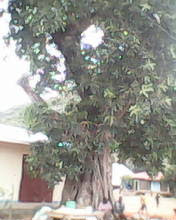Share this page Email Print 1.1K Share Facebook Twitter Japan panel: Fukushima nuclear disaster 'man-made' Cannot play media. You do not have the correct version of the flash player. Download the correct version The BBC's Mariko Oi in Tokyo: ''It was a disaster... made in Japan'' Continue reading the main story Japan quake Fukushima report: Key points Fukushima glimpse How plant was stabilised What went wrong? The crisis at the Fukushima nuclear plant was "a profoundly man-made disaster", a Japanese parliamentary panel has said in a report. The disaster "could and should have been foreseen and prevented" and its effects "mitigated by a more effective human response", it said. The report catalogued serious deficiencies in both the government and plant operator Tepco's response. It also blamed cultural conventions and a reluctance to question authority. Continue reading the main story Analysis image of Mariko Oi Mariko Oi BBC News, Tokyo While the report is highly critical of all the key parties, it digs even deeper. The panel called the disaster "Made in Japan", because the mindset that allowed the accident to happen can be found across the country. It flagged up the bureaucracy's role in both promoting and regulating the nuclear industry, and also cultural factors such as a traditional reluctance to question authority. The report was expected to use strong language, but not many thought it would be this harsh. The panel also found that there was a possibility that the plant was damaged by the earthquake, contradicting the official position that only the tsunami contributed to the disaster. It could put further pressure on the government, which recently authorised the restart of two nuclear reactors in western Japan. They were declared safe in April but the plant also sits on top of a fault line. The six-reactor Fukushima Daiichi nuclear plant was badly damaged after the 11 March 2011 earthquake and tsunami knocked out cooling systems to reactors, leading to meltdowns and the release of radioactivity. Tens of thousands of residents were evacuated from an exclusion zone around the plant as workers battled to bring reactors under control. Tepco declared the reactors stable in December 2011. Members of the Fukushima Nuclear Accident Independent Investigation Commission were appointed to examine the handling of the crisis and make recommendations. The investigation included 900 hours of hearings and interviews with more than 1,000 people. 'Insular attitude' In the panel's final report, its chairman said a multitude of errors and wilful negligence had left the plant unprepared for the earthquake and tsunami.
Japan panel: Fukushima nuclear disaster 'man-made'

Cannot play media. You do not have the correct version of the flash player. Download the correct version
The BBC's Mariko Oi in Tokyo: ''It was a disaster... made in Japan''
The crisis at the Fukushima nuclear plant was "a profoundly man-made disaster", a Japanese parliamentary panel has said in a report.
The disaster "could and should have been foreseen and prevented" and its effects "mitigated by a more effective human response", it said. The report catalogued serious deficiencies in both the government and plant operator Tepco's response.
It also blamed cultural conventions and a reluctance to question authority.
Continue reading the main story
It flagged up the bureaucracy's role in both promoting and regulating the nuclear industry, and also cultural factors such as a traditional reluctance to question authority.
The report was expected to use strong language, but not many thought it would be this harsh.
The panel also found that there was a possibility that the plant was damaged by the earthquake, contradicting the official position that only the tsunami contributed to the disaster.
It could put further pressure on the government, which recently authorised the restart of two nuclear reactors in western Japan. They were declared safe in April but the plant also sits on top of a fault line.
Analysis
While the report is highly critical of all the key parties, it digs even deeper. The panel called the disaster "Made in Japan", because the mindset that allowed the accident to happen can be found across the country.It flagged up the bureaucracy's role in both promoting and regulating the nuclear industry, and also cultural factors such as a traditional reluctance to question authority.
The report was expected to use strong language, but not many thought it would be this harsh.
The panel also found that there was a possibility that the plant was damaged by the earthquake, contradicting the official position that only the tsunami contributed to the disaster.
It could put further pressure on the government, which recently authorised the restart of two nuclear reactors in western Japan. They were declared safe in April but the plant also sits on top of a fault line.
The six-reactor Fukushima Daiichi nuclear plant was badly damaged after the 11 March 2011 earthquake and tsunami knocked out cooling systems to reactors, leading to meltdowns and the release of radioactivity.
Tens of thousands of residents were evacuated from an exclusion zone around the plant as workers battled to bring reactors under control. Tepco declared the reactors stable in December 2011. Members of the Fukushima Nuclear Accident Independent Investigation Commission were appointed to examine the handling of the crisis and make recommendations.
The investigation included 900 hours of hearings and interviews with more than 1,000 people.
'Insular attitude' In the panel's final report, its chairman said a multitude of errors and wilful negligence had left the plant unprepared for the earthquake and tsunami.


Comments
Post a Comment